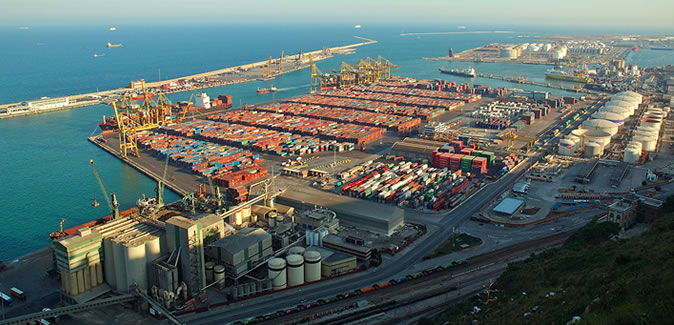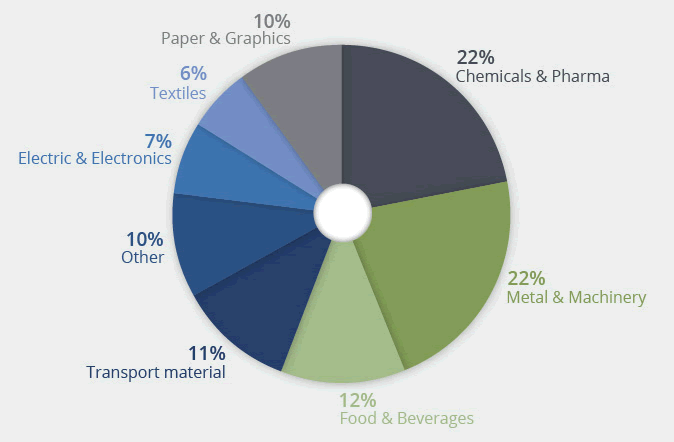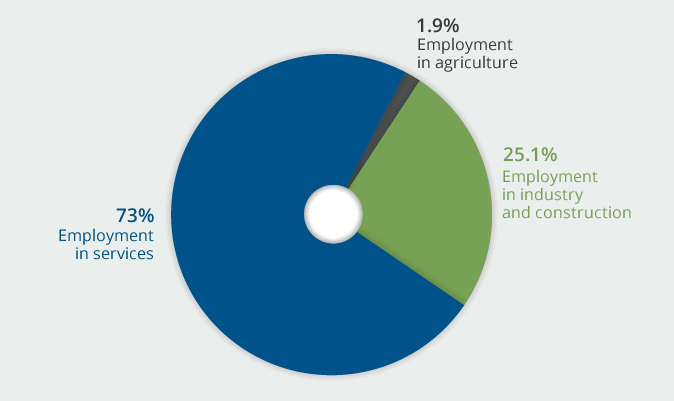Catalonia and its capital, Barcelona, are the driving force of a large, dynamic and diverse economic area. Thanks to its strategic position, it is the gateway to Southern Europe, a crucial area in the Mediterranean, a bridge to the Maghreb region in North Africa and a platform towards Latin America. It represents 30% of Spanish foreign trade and is a popular and world-famous tourist destination. The most important industrial sectors are food and beverages biopharmaceutics, chemical, Information and Communication Technologies (ICT) and medical technology. Catalonia is a leading research actor, with 1.5% of the European population, it receives 2.2% of the European competitive funds and 3.5% of the European Research Council (CIR) grants. This places Catalonia at the third place of the top ten EU and among the top five when including all the participating countries (projects per ERC call for projects/million inhabitants).
| GDP (billion €) | 234,7 (ranks between Finland and Denmark) (2017) |
| GDP per capita (€) | 29,966 (EU-28: 28,700) (2016) |
| ICP (annual variation) | 2.3% (variation between Sept. 2018 and 2017) |
| Exports (million €) | 70,828 (25% of all Spanish exports; 65% of exports to the EU markets) |
| Imports (million €) | 76,850 |
| Openness ratio | 61% |
| R&D expenditure | 1.6% of GDP (3,104 million €) (2013) |
| Number of active companies | 611,751 (2011) |
| Number of foreign companies | 5,600 (2013). Catalonia hosts 38.6% of all foreign companies in Spain (2013). |
| Foreign investment | € 4,064 million (annual average 2013-2017) (The 1st of the FDI Strategy list in ‘Large European regions of the future 2018/19, the Financial Times) |
Infrastructures

| Barcelona harbour | Biggest Mediterranean port in terms of goods volume, biggest European port in terms of cruise traffic (fourth biggest cruise base port in the world). Other important ports: Tarragona, Vilanova i la Geltrú, Palamós. |
| Barcelona’s harbour total transit (thousand tons) | 41,487.4 |
| Barcelona-El Prat Airport | Operates more than 900 flights a day and connects with several destinations in America, Africa, Europe and Asia. |
| Airport number of passengers | 35,145,176 |
| Other airports in Catalonia | Girona Airport, Reus Airport and Lleida-Alguaire Airport |
| Railway | High speed connections between most important Catalan cities and direct trains to Paris, Madrid and other Spanish destinations |
| Road network size | 12,000 km, of which about 1,000 are motorways |
| Passenger cars per 1,000 inhabitants | 448 |
Catalan economy by sectors
| Gross Value Added (million €) | 191,476 |
Economy by sectors:

| Agricultural holdings (1,000) | 61 (2009) |
Industry by sectors:

| Tourism sector employs | 11% of the population |
| Tourist establishments | 6.06 (48% of which are hotels) |
| Bed-places (1,000) | 748 (43.2% of which are hotels) |
| Number of foreign tourists | 15,580,362 (2013) |
Employment
| Active Population (1,000) | 3,735 |
| Unemployment rate | 22.7% |
Employment by sectors:

Information society
| Households with Internet Access | 72% |
| E-government usage | 45% |
Barcelona
Barcelona is the sixth top-ranking European city for business, after London, Paris, Frankfurt, Amsterdam and Berlin, according to the European Cities Monitor 2011 (Cushman & Wakefield report).
World Mobile Capital: from 2012 to 2018 Barcelona hosts the GSMA Mobile World Conference and hosts activities to create a dynamic professional ecosystem for the mobile phone and its satellite industries.
Barcelona was named European Innovation Capital in March 2014, becoming the first European iCapital.
In 2011, 72 local leaders from all over the world selected Barcelona as their most admired city in Ernst & Young’s Cities for Citizens report.

